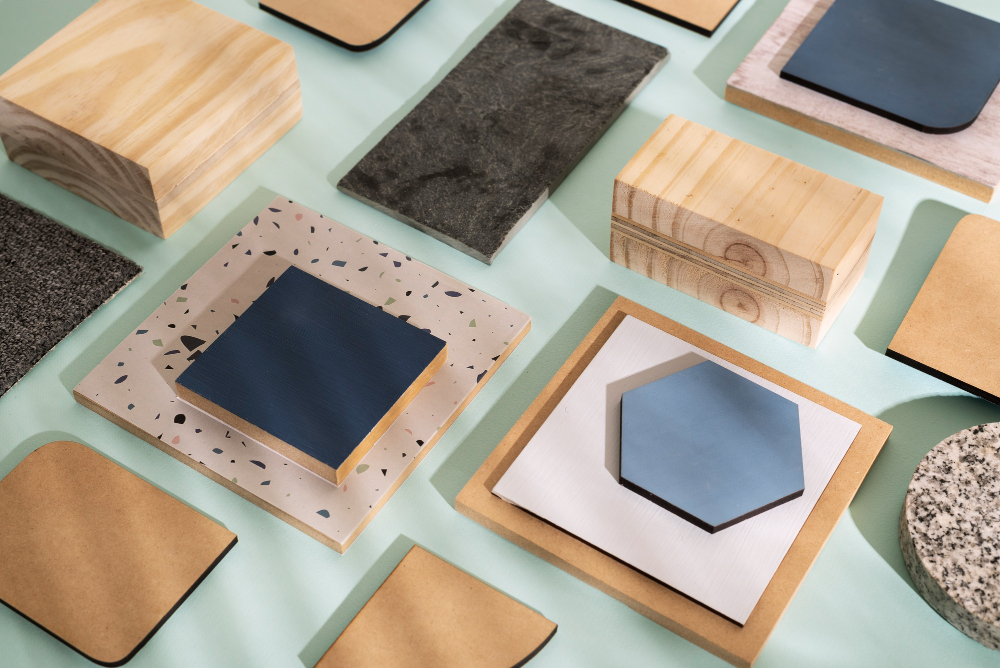When choosing tiles for your home or office, durability is often one of the top priorities. With so many options available, it can be tough to decide which type of tile will last the longest. Two of the most popular choices are porcelain and ceramic tiles. But which one is more durable? In this article, we’ll compare porcelain and ceramic tiles, breaking down their differences so you can make the best decision for your space.
Understanding Porcelain and Ceramic Tiles
Porcelain Tiles
Porcelain tiles are made from a type of clay called kaolin, which is fired at very high temperatures. This process makes them denser and less porous than other types of tiles. Because of this, porcelain tiles are known for their strength and durability. They can be used in various settings, from floors to walls, and are particularly good for areas with high traffic or moisture.
Also, check it out the types of porcelain tiles
Ceramic Tiles
Ceramic tiles are also made from clay, but they usually have a more porous and less dense structure compared to porcelain. The clay used in ceramic tiles is fired at lower temperatures, which makes them slightly softer and less resistant to water. Ceramic tiles are commonly used for indoor flooring, backsplashes, and walls. While they may not be as durable as porcelain tiles, they are still a popular choice due to their wide range of designs and affordability.
Durability Factors
Water Absorption Rate
One of the key factors that affect the durability of a tile is its water absorption rate. Porcelain tiles have a very low absorption rate, usually less than 0.5%. This makes them highly water-resistant, which is why they are often used in bathrooms, kitchens, and outdoor spaces. Ceramic tiles, on the other hand, have a higher absorption rate, making them less suitable for areas with a lot of moisture. The lower the absorption rate, the more durable the tile will be over time, especially in wet environments.
Density and Hardness
When comparing the density and hardness of porcelain and ceramic tiles, porcelain comes out on top. The high-temperature firing process makes porcelain tiles much denser and harder than ceramic tiles. This means that porcelain tiles are better at withstanding heavy impacts and foot traffic without cracking or chipping. On the Mohs scale, which measures the hardness of materials, porcelain tiles generally rank higher than ceramic tiles, making them a more durable option for floors and walls.
Scratch and Stain Resistance
Another important factor to consider is the tile’s resistance to scratches and stains. Porcelain tiles are highly resistant to both, thanks to their dense and hard surface. This makes them an excellent choice for areas like kitchens, where spills and heavy use are common.
Ceramic tiles, while still durable, are more prone to scratching and staining, which can affect their appearance over time. If you’re looking for a tile that will maintain its looks with minimal maintenance, porcelain is the better option.
Ideal Use Cases
High-Traffic Areas
If you’re planning to install tiles in a high-traffic area, such as a hallway, entryway, or living room, porcelain tiles are the way to go. Their density and hardness make them resistant to wear and tear, ensuring they stay in good condition even after years of use. Ceramic tiles can also be used in these areas, but they may show signs of wear more quickly than porcelain tiles.
Moisture-Prone Areas
For areas that are prone to moisture, such as bathrooms, kitchens, or outdoor patios, porcelain tiles are the best choice. Their low water absorption rate makes them highly resistant to water damage, preventing issues like mold and mildew from forming. While ceramic tiles can be used in these areas, they may not last as long or perform as well as porcelain tiles in wet conditions.
Aesthetic and Design Preferences
When it comes to design, both porcelain and ceramic tiles offer a wide range of options. However, because porcelain tiles are more durable, they are often available in more intricate and high-end designs. If you’re looking for a tile that combines durability with aesthetic appeal, porcelain tiles are an excellent choice. Ceramic tiles, while not as durable, are still a great option if you’re on a budget and looking for a variety of design choices.
Cost Considerations
While porcelain tiles are generally more durable than ceramic tiles, they also tend to be more expensive. The higher cost is due to the materials and manufacturing process involved in making porcelain tiles. However, when you consider the long-term benefits, such as their resistance to water, scratches, and stains, porcelain tiles can be more cost-effective in the long run.
Installation costs can also vary between the two types of tiles. Porcelain tiles are denser and harder, making them more challenging to cut and install. This can increase the overall installation costs compared to ceramic tiles.
However, the added durability of porcelain tiles may make them worth the extra investment, especially for high-traffic or moisture-prone areas.
Conclusion
When it comes to choosing between porcelain and ceramic tiles, durability is a key factor to consider. Porcelain tiles, with their low water absorption rate, high density, and resistance to scratches and stains, are the more durable option. They are ideal for high-traffic and moisture-prone areas, offering long-lasting performance even under tough conditions.
Ceramic tiles, while not as durable, still offer good performance and a wide range of design options, making them a suitable choice for many indoor applications. When deciding between the two, consider the specific needs of your space, your budget, and the long-term benefits of each option.
In the end, both porcelain and ceramic tiles have their strengths and can be excellent choices depending on your specific needs.
Whether you’re looking to export tiles for a large project or simply updating a room in your home, understanding the differences in durability can help you make the best decision for your space.
